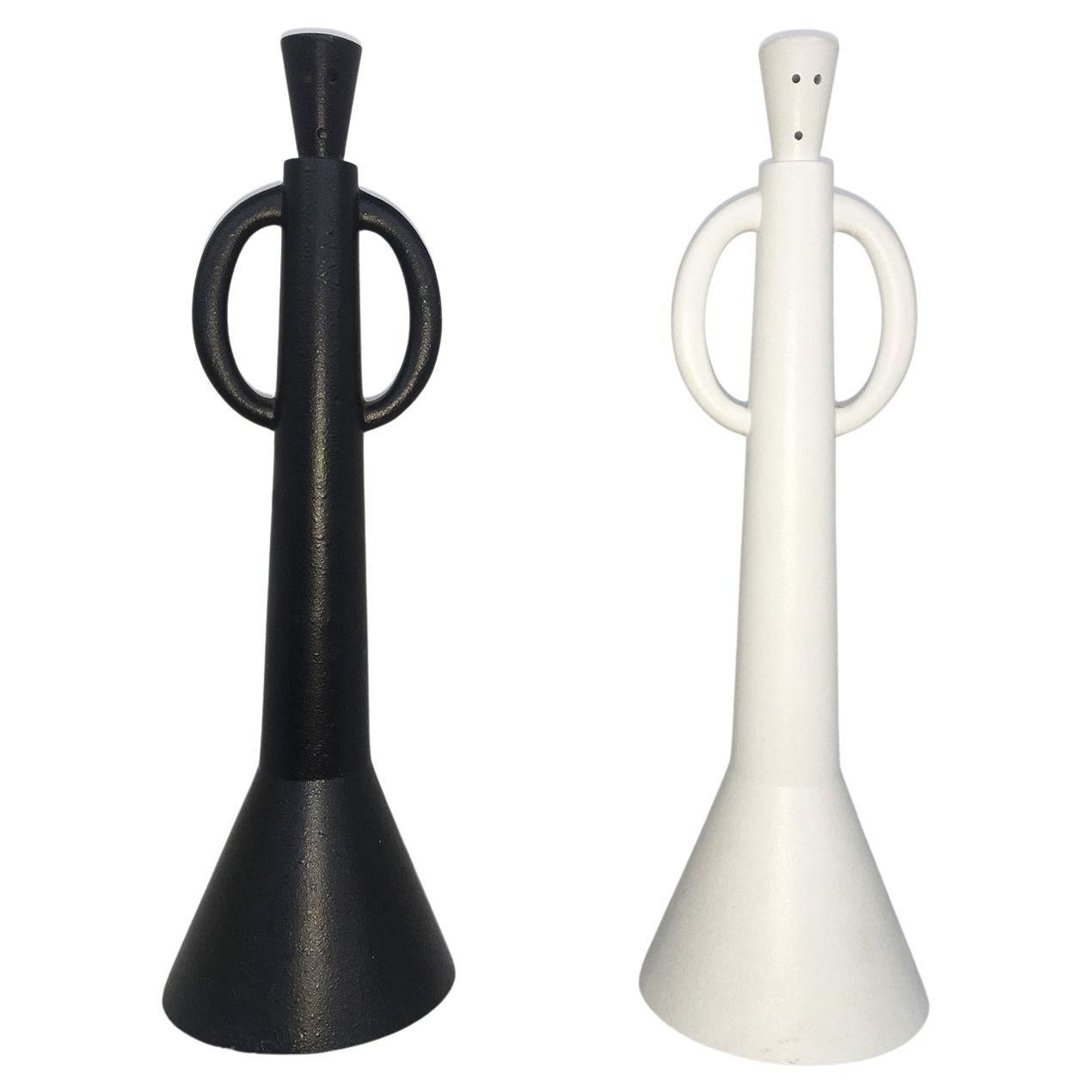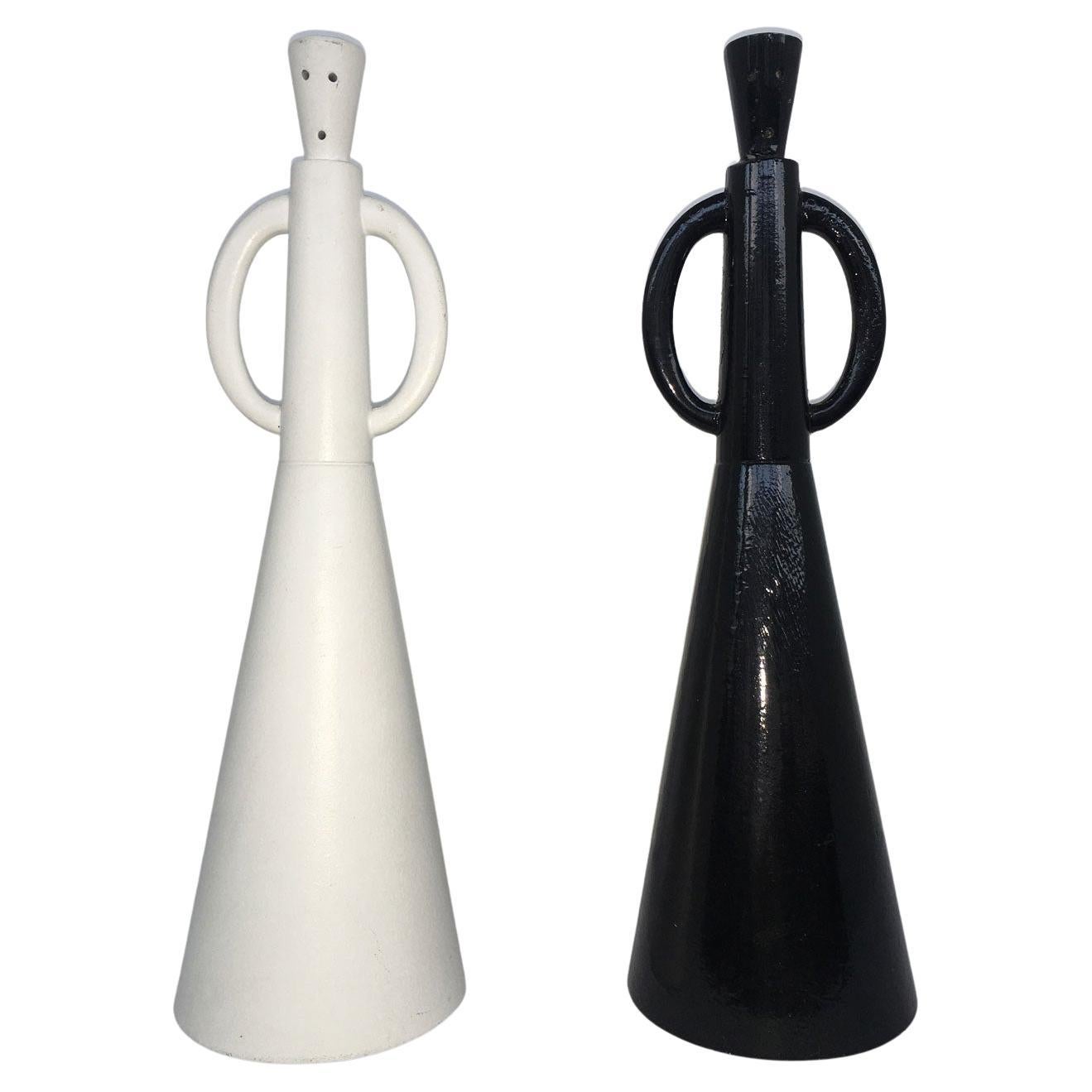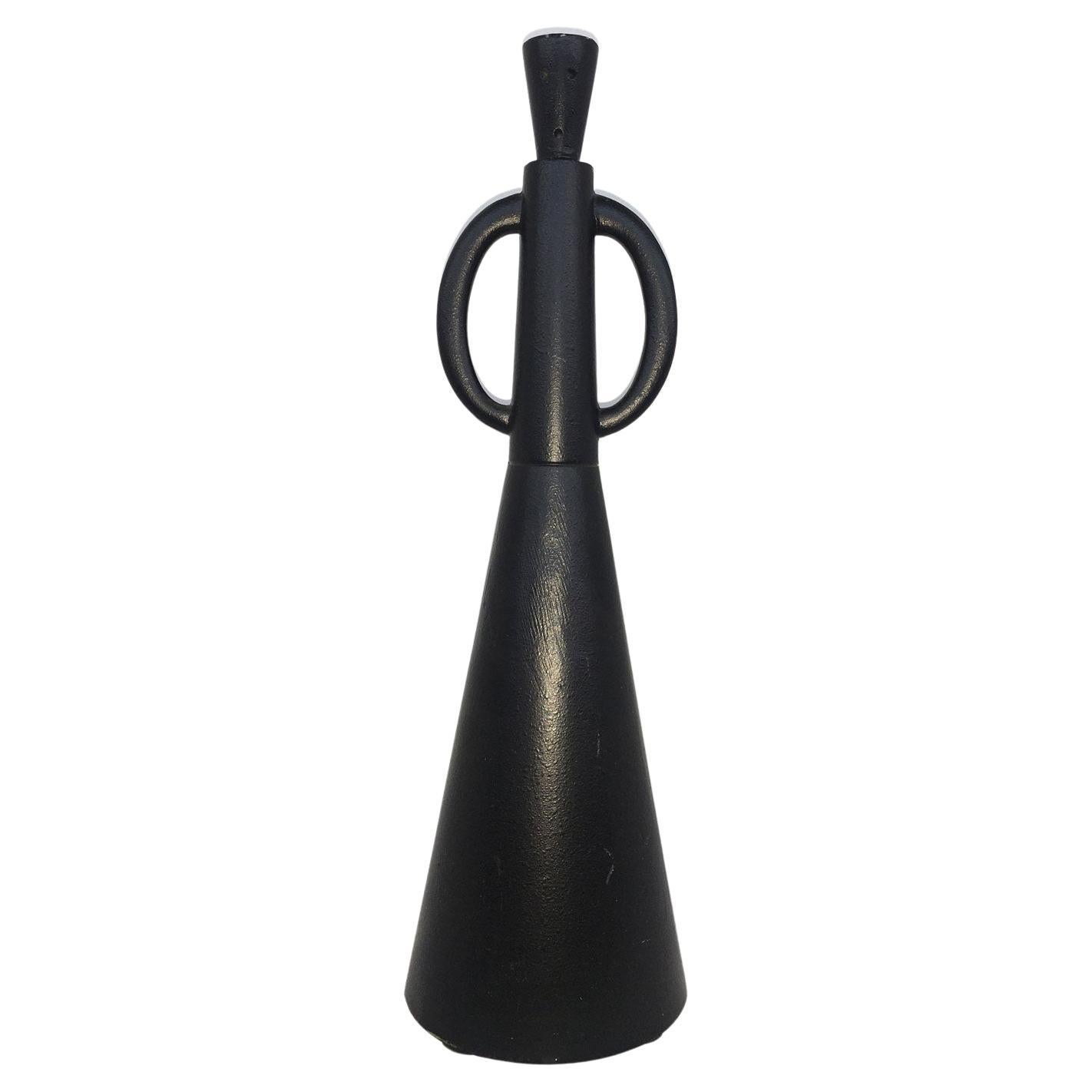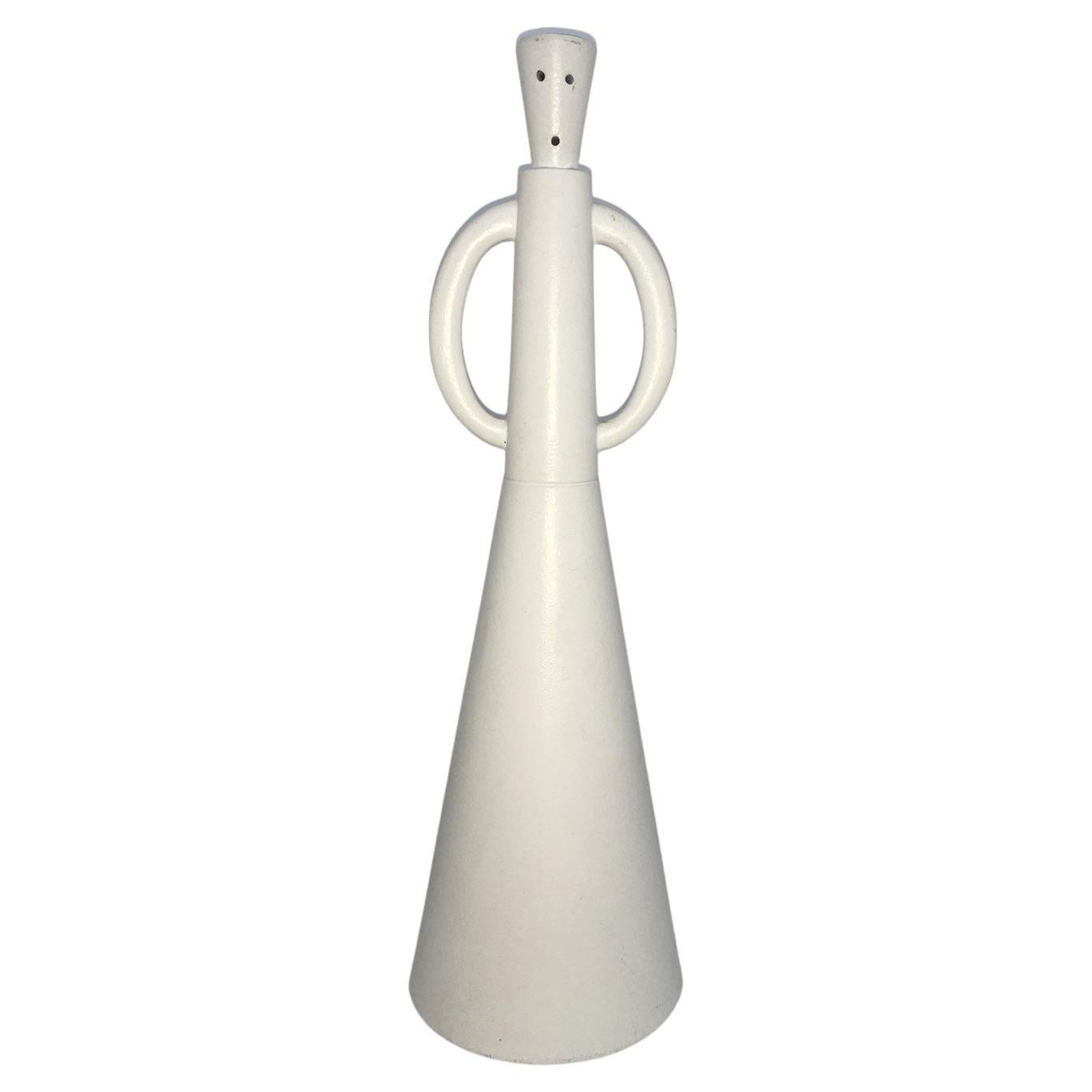Items Similar to Spiritello Sculpture Prototype by Alessandro Guerriero for Alchimia, Italy
Want more images or videos?
Request additional images or videos from the seller
1 of 10
Spiritello Sculpture Prototype by Alessandro Guerriero for Alchimia, Italy
About the Item
"Spiritello" plexiglass sculpture designed by Alessandro Guerriero for Alchimia, circa 1990.
Signed Alchimia, A. Guerriero.
Biography
In 1976 Alessandro and Adriana Guerriero established Alchimia, the first example of manufacturing designers in Milan. In 1978 and 1979 they presented the Bau haus and Bau haus II collections. Lamps, armchairs, chairs, tables, cabinets, and so on. Artists involved: Alessandro Mendini, Ettore Sottsass, Bruno and Giorgio Gregori, Michele De Lucchi, Andrea Branzi, UFO, Paola Navone, Daniela Puppa, Franco Raggi. The prevalent decorative material is laminated plastic. Alchimia’s culture, which is against the Italian design (Casabella magazine) changes the base of all previous design theories, resulting in a profound and radical change in the mindset of architects.
Visual Alphabets, Redesign, Trivial Design, Cosmetics and Sentimental Robot are the slogans underlying the exuberant and vast production of Alchimia city. In the theoretical manifesto of the group, Alessandro Mendini writes “Alchimia is not interested in disciplines because they are considered to be within their rules. Indeed, it is important to look into the existing large free spaces between them. Alchimia weighs the assumption that conception and confused production methods should coexist where craftsmanship, manufacturing, information technology, techniques and current and obsolete materials can get mixed up. “They are handcrafted objects, recycled, mass, improbable, provocative, Kitsch, all very theory-laden. It operates and experiences in many sectors: the Pensione Ideale (Franco Raggi), the Copertine di Domus (Occhiomagico), the Abito Sonoro and the performance of Persone Dipinte (Anna Gili), the Stilismo della Moda (Cinzia Ruggeri). The Neo-modern design, the new Italian design, is born.
In 1981, the Mobile Infinito, due to excess, cancelled both the types and project designers, thus entering into theatrical experiment with the Magazzini Criminali.
The emotional, psychological and anthropological activities expand to books, didactics, video (Metamorfosi) and sounds (Matia Bazar). Alessandro Guerriero is a founding member of Domus Academy in 1982 and in 1984, he began Nuova Alchimia under the brand Zabro. It is Aurelio Zanotta who supports this post-industrial collection.
In 1992, the romantic activity of Alchimia was terminated.
Today he continues his heroic adventure.
- Creator:Gruppo Alchimia (Manufacturer),Alessandro Guerriero (Designer)
- Dimensions:Height: 25.2 in (64 cm)Width: 17.72 in (45 cm)Depth: 7.09 in (18 cm)
- Style:Modern (Of the Period)
- Materials and Techniques:
- Place of Origin:
- Period:1990-1999
- Date of Manufacture:circa 1990
- Condition:
- Seller Location:Milan, IT
- Reference Number:1stDibs: LU2140314468711
About the Seller
4.9
Gold Seller
These expertly vetted sellers are highly rated and consistently exceed customer expectations.
Established in 2006
1stDibs seller since 2016
295 sales on 1stDibs
Typical response time: 1 hour
- ShippingRetrieving quote...Ships From: Milan, Italy
- Return PolicyA return for this item may be initiated within 14 days of delivery.
More From This SellerView All
- Alessandro Guerriero Credenzas for Collection Redesign Alchimia, ItalyBy Gruppo Alchimia, Alessandro GuerrieroLocated in Milan, ItalyOriginal Credenzas from the Redesign Collection designed by Alessandro Guerriero for the Alchimia Group, 1990. Vintage furniture decorated with acrylic. Hand painted. Exhibited at the show "Alessandro Guerriero: al diavolo Alchimia!", Must, 2017 Lecce. Biography In 1976 Alessandro and Adriana Guerriero established Alchimia, the first example of manufacturing designers in Milan. In 1978 and 1979 they presented the Bau haus and Bau haus II collections. Lamps, armchairs, chairs, tables, cabinets and so on. Artists involved: Alessandro Mendini, Ettore Sottsass, Bruno and Giorgio Gregori, Michele De Lucchi, Andrea Branzi, UFO, Paola Navone, Daniela Puppa, Franco Raggi. The prevalent decorative material is laminated plastic. Alchimia’s culture, which is against the Italian design (Casabella magazine) changes the base of all previous design theories, resulting in a profound and radical change in the mind-set of architects. Visual Alphabets, Redesign, Trivial Design, cosmetics and sentimental robot are the slogans underlying the exuberant and vast production of Alchimia city. In the theoretical manifesto of the group, Alessandro Mendini writes “Alchimia is not interested in disciplines because they are considered to be within their rules. Indeed, it is important to look into the existing large free spaces between them. Alchimia weighs the assumption that conception and confused production methods should coexist where craftsmanship, manufacturing, information technology, techniques and current and obsolete materials can get mixed up. “They are handcrafted objects, recycled, mass, improbable, provocative, Kitsch, all very theory-laden. It operates and experiences in many sectors: the Pensione Ideale (Franco Raggi), the Copertine di Domus (Occhiomagico), the Abito Sonoro and the performance of Persone Dipinte (Anna Gili), the Stilismo della Moda (Cinzia Ruggeri...Category
1990s Italian Modern Credenzas
MaterialsWood, Acrylic
- Bookcase Totem Collezione Ollo Alchimia by Alessandro Guerriero, ItalyBy Gruppo Alchimia, Alessandro GuerrieroLocated in Milan, ItalyBookcase Totem Ollo collection, Alchimia, 2019, in lacquered wood black and metallic yellow. In 1976 Alessandro and Adriana Guerriero established Alchi...Category
2010s Italian Modern Bookcases
MaterialsWood
- Alessandro Guerriero Painting for AlchimiaBy Alessandro GuerrieroLocated in Milan, ItalyAcrylic painting on canvas by Alessandro Guerriero for Alchimia in 2019. Signed and original label. Biography: In 1976 Alessandro and Adriana Guerriero established Alchimia, the first example of manufacturing designers in Milan. In 1978 and 1979 they presented the Bau haus and Bau haus II collections. Lamps, armchairs, chairs, tables, cabinets, and so on. Artists involved: Alessandro Mendini, Ettore Sottsass, Bruno and Giorgio Gregori, Michele De Lucchi, Andrea Branzi, UFO, Paola Navone, Daniela Puppa, Franco Raggi. The prevalent decorative material is laminated plastic. Alchimia’s culture, which is against the Italian design (Casabella magazine) changes the base of all previous design theories, resulting in a profound and radical change in the mindset of architects. Visual Alphabets, Redesign, Trivial Design, Cosmetics and Sentimental Robot are the slogans underlying the exuberant and vast production of Alchimia city. In the theoretical manifesto of the group, Alessandro Mendini writes “Alchimia is not interested in disciplines because they are considered to be within their rules. Indeed, it is important to look into the existing large free spaces between them. Alchimia weighs the assumption that conception and confused production methods should coexist where craftsmanship, manufacturing, information technology, techniques and current and obsolete materials can get mixed up. “They are handcrafted objects, recycled, mass, improbable, provocative, Kitsch, all very theory-laden. It operates and experiences in many sectors: the Pensione Ideale (Franco Raggi), the Copertine di Domus (Occhiomagico), the Abito Sonoro and the performance of Persone Dipinte (Anna Gili), the Stilismo della Moda (Cinzia Ruggeri...Category
21st Century and Contemporary Italian Modern Paintings
MaterialsAcrylic
- Ir_reale Table Tribute to Carlo Mollino by Alessandro Guerriero for AlchimiaBy Gruppo Alchimia, Alessandro GuerrieroLocated in Milan, ItalyIr_reale table tribute to Reale table of Carlo Mollino, 1946 designed and produced by Alchimia in 2010. The table has a base in FLOU plexiglass and crystal top. Limited edition of nine copies in different colors. Signed and numbered. Biography In 1976 Alessandro and Adriana Guerriero established Alchimia, the first example of manufacturing designers in Milan. In 1978 and 1979 they presented the Bau haus and Bau haus II collections. Lamps, armchairs, chairs, tables, cabinets, and so on. Artists involved: Alessandro Mendini, Ettore Sottsass, Bruno and Giorgio Gregori, Michele De Lucchi, Andrea Branzi, UFO, Paola Navone, Daniela Puppa, Franco Raggi. The prevalent decorative material is laminated plastic. Alchimia’s culture, which is against the Italian design (Casabella magazine) changes the base of all previous design theories, resulting in a profound and radical change in the mindset of architects. Visual Alphabets, Redesign, Trivial Design, Cosmetics and Sentimental Robot are the slogans underlying the exuberant and vast production of Alchimia city. In the theoretical manifesto of the group, Alessandro Mendini writes “Alchimia is not interested in disciplines because they are considered to be within their rules. Indeed, it is important to look into the existing large free spaces between them. Alchimia weighs the assumption that conception and confused production methods should coexist where craftsmanship, manufacturing, information technology, techniques and current and obsolete materials can get mixed up. “They are handcrafted objects, recycled, mass, improbable, provocative, Kitsch, all very theory-laden. It operates and experiences in many sectors: the Pensione Ideale (Franco Raggi), the Copertine di Domus (Occhiomagico), the Abito Sonoro and the performance of Persone Dipinte (Anna Gili), the Stilismo della Moda (Cinzia Ruggeri...Category
2010s Italian Modern Tables
MaterialsCrystal
- Chair Post Steltman by Alessandro Guerriero for Alchimia Redesign CollectionBy Alessandro GuerrieroLocated in Milan, ItalyChair re-designed by Alessandro Guerriero for the Alchimia Redesign Collection. The piece is a tribute to the famous Steltman chair design...Category
2010s Italian Modern Chairs
MaterialsPlexiglass
- Table Acubens Model Collection I Soli Alchimia by Alessandro Guerriero ItalyBy Studio Alchimia, Alessandro GuerrieroLocated in Milan, ItalyElegant Acubens table of the collection I Soli designed by Alessandro Guerriero and produced by Studio Alchimia in 1988. Biography In 1976 Alessandro and Adriana Guerriero establish...Category
Vintage 1980s Italian Modern Coffee and Cocktail Tables
MaterialsCrystal
You May Also Like
- 1980 Italy Post-Modern Abstract Sculpture Alessandro Guerriero Portabuono QuaBy Alessandro GuerrieroLocated in Brescia, ITThis artwork was created by the Italian artist Alessandro Guierriero, it is a multiple of a serie of specimens made in limited edition not numbered. The set is forged in aluminum and...Category
Late 20th Century Italian Post-Modern Abstract Sculptures
MaterialsAluminum
- 1980 Italy Post-Modern Alessandro Guerriero Abstract Sculpture Portabuono QuoBy Alessandro GuerrieroLocated in Brescia, ITThis artwork was created by the Italian artist Alessandro Guierriero, it is a multiple of a serie of specimens made in limited edition not numbered. The set is forged in aluminum and...Category
Late 20th Century Italian Post-Modern Abstract Sculptures
MaterialsAluminum
- 1980 Italy Post-Modern Alessandro Guerriero Abstract Sculpture Portabuono QuoBy Alessandro GuerrieroLocated in Brescia, ITThis artwork was created by the Italian artist Alessandro Guierriero, it is a multiple of a serie of specimens made in limited edition not numbered. The set is forged in aluminum and...Category
Late 20th Century Italian Post-Modern Abstract Sculptures
MaterialsAluminum
- 1980 Italy Post-Modern Abstract Sculpture Alessandro Guerriero Portabuono QuaBy Alessandro GuerrieroLocated in Brescia, ITThis artwork was created by the Italian artist Alessandro Guierriero, it is a multiple of a serie of specimens made in limited edition not numbered. The set is forged in aluminum and...Category
Late 20th Century Italian Post-Modern Abstract Sculptures
MaterialsAluminum
- 1980 Italy Post-Modern Abstract Sculpture Alessandro Guerriero Portabuono QuaBy Alessandro GuerrieroLocated in Brescia, ITThis artwork was created by the Italian artist Alessandro Guierriero, it is a multiple of a serie of specimens made in limited edition not numbered. The set is forged in aluminum and...Category
Late 20th Century Italian Post-Modern Abstract Sculptures
MaterialsAluminum
- 1980 Italy Post-Modern Alessandro Guerriero Abstract Sculpture Portabuono QuoBy Alessandro GuerrieroLocated in Brescia, ITThis artwork was created by the Italian artist Alessandro Guierriero, it is a multiple of a serie of specimens made in limited edition not numbered. The set is forged in aluminum and...Category
Late 20th Century Italian Post-Modern Abstract Sculptures
MaterialsAluminum
Recently Viewed
View AllMore Ways To Browse
1976 Italian Furniture
Sculptured Chairs Italy
Italian Radical
Radical Italian Design
Prototype Lamp
Italian Robot
Sottsass 1990
Plexiglas Chair
Plexi Chair
Terminator Sculpture
Retro Ufo Lamp
Italian Laminate Chairs
Italian Plastic Laminate
Vintage Anthropology
Alchimia Italy
Obsolete Furniture
Giorgio Della
Theatrical Romantic





